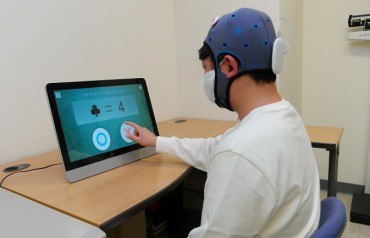
This computer-generated image from Yonhap News TV depicts obesity. The number of obese people in South Korea more than doubled between 2017 and 2021, data showed.
SEOUL, April 21 (Korea Bizwire) – The number of obese people in South Korea more than doubled between 2017 and 2021, a trend exacerbated by the coronavirus pandemic, data showed Thursday.
According to the Health Insurance Review and Assessment Service, the number of overweight patients increased from 14,966 in 2017 to 31,170 last year.
The number of obese men increased by 3.4-fold to 9,676 and that of female patients grew by 1.7 times to 20,494.
By age, those in their 30s had the largest proportion at 22.1 percent, followed by those in their 40s with 21.6 percent and 50s with 13.2 percent.
The increase was fastest among those younger than 20.
The number of teenage overweight patients increased by 3.6-fold to 4,457, and the figure among those under 10 tripled to 3,102.
The report said changing diets and increasing unhealthy habits during the pandemic appear to have contributed to the problem.
“Lack of exercise and increased consumption of instant and delivery food can be seen as one of causes of the recent increase in obese patients,” the institute said.
“In particular, active attention and efforts from schools, parents and students are needed to address sharply increasing obesity among teenagers,” it added.
The survey also found the number of patients suffering from nutritional deficiency more than doubled from 149,791 in 2017 to 335,441 last year.
Among them, 254,383 were women and 81,058 were men.
By age, those in their 50s took the lion’s share with 24 percent, followed by those in their 60s with 21 percent and those in their 40s with 16.8 percent.
The increase rate was higher among teenagers and children. The number of patients younger than 10 doubled to 7,822, while those in their 10s increased by 2.8-fold to 13,522.
Patients with vitamin D deficiency accounted for 73.7 percent of the total, while 10.9 percent suffer from vitamin A deficiency.
(Yonhap)






